lundi, 16 janvier 2017
Tradition, Politics and National Identity
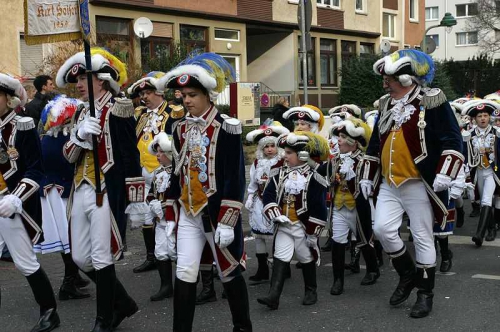
Tradition, Politics and National Identity
By Gwendolyn Taunton
Ex: https://manticorepress.net
This article was originally published in The Radical Tradition (out of print).
The issue of political identity is not often connected with spiritual sources in the eyes of the average citizen; however on an imperceptible, inextricable level, the two are combined in a myriad of ways which escape the notice of many. Indeed, the application of spiritual and/or mythical elements being deployed as part of a political agenda is nothing new, for it can found in a diverse range of historical epochs from the time of the Roman Empire to contemporary politics. The parallel I wish to draw is between the concept of the Primordial Tradition (standing as a sui generis argument) to the theory of primordialism in political science, with the specific intent of identifying and providing a new definition of cultural identity that is intended to bypass both the political left/right dichotomy and approach identity from a ‘top-down’ perspective, as opposed to a flat, unilateral model of left/right duality. The need for a new theory of national identity is becoming one of paramount importance in the increasingly isolated world of mass ‘individualism’ which has come to predominate the modern world. In the process of cross-comparison between Traditions and primordialism, a clear narrative of interaction will be extrapolated to reveal a blue print for the construction of a new form of political theory that seeks to redefine the common elements in national identities. To begin the discourse, a brief introduction to the twin theories of the Primordial Tradition and primordialism is required.
The Primordial Tradition is rightly defined as being a sui generis argument meaning that it is self-generating – a concept which originated with Durkheim. Essentially a sui generis argument is classified as self-perpetuating because it originates from a concept which is deemed to be existent from the beginning. In the sociology of Émile Durkheim, a sui generis is used to illustrate his theory on social existence. Durkheim states that the main object of sociology is to study social facts. These social facts can only be explained by other social facts. They have a meaning of their own and cannot be reduced to psychological or biological factors. Social facts have a meaning of their own, and are ‘sui generis’. Durkheim also states that when one takes an organization and replaces some individuals with others, the essence of the organization does not necessarily change. It can happen, for example, that over the course of a few decades, the entire staff of an organization is replaced, while the organization still retains its distinctive character. Durkheim does not limit this thought to organizations, but extends it to the whole society: he maintains that society, as it was there before any particular living individual was born, is independent of all individuals. His sui generis (its closest English meaning in this sense being ‘independent’) society will furthermore continue its existence after the individual ceases to interact with it. Society and culture, are therefore naturally arising phenomena.
Sui generis is a Latin expression, literally meaning “of its own kind/genus”, or unique in its characteristics. In this circumstance spirituality and Tradition are deemed to be archetypal concepts which are inherent in the psyche of humans from the beginning of the evolution of consciousness itself. Like, society, they are naturally occurring. This implies a relationship with Jungian thought and links it to Jung’s theory of the subconscious and archetypes as symbols, which whilst are not possessed of a corporeal existence, act as what he called ‘psychoids’. These psychoids are not themselves alive but possess an abstract existence which influences the nature of human thought despite the fact that they themselves are not sentient. This idea is similar to that which was expressed by Plato when he discussed the realm of Ideals in which abstract concepts take on an existence in a theoretical plane of reality. This idea of a Primordial Tradition which serves as an ideological substratum for all of the world’s Traditions to draw upon, in best thought of a repository of universal archetypes which are translated into the various Traditions of the world, each one being shaped by the geographic and cultural phenomena present in the respective Traditions. The language of Tradition is ethno-symbolist in origin; symbols and patterns of belief shape the cultures of the world around them. When minor discrepancies can be found in the archetypes (if examined in a cross-cultural comparison), they are easily explained as being a different translation of the same archetype or symbol, for it is imperative to remember that not all cultural groups in the world share the same set of psychological processes; each culture has been shaped by unique historical, geographical, natural and social forces. Thus the God of an indigenous shamanic population may appear radically different to the God of the Jews or Christians, though all are in fact speaking of the same entity. The foundational premise of the symbol is the same as that of an archetypal phenomena; however the translation itself is parsed through each environment differently.
If we are to accept spirituality as a self-generating phenomena set apart from the world of the mundane by its inherent qualities of the sacred and transcendent, how can we relate this process to the construction of a national identity? The answer to this question arises from an older theory which has fallen out of grace with contemporary political critique – primordialism. Not only is there a great similarity between the titles of the two theories, there is also a significant overlap between the two concepts, for both are self-generating and self-perpetuating without the need for any artificial intervention – in sum, both are organic, living forms of belief and awareness which are to be found in all peoples for they are universal values. Though at first the concept of an organic mode of national identity (and hence also an organic model for political identity) may appear like a radical transition, it is in fact not. The term primordialism (sometimes also known as perennialism) in political theory is the argument which contends that nations are ancient, natural phenomena, and thus shape themselves when constructing an identity. This stands in radical contrast to the inorganic modernist view of nationality, which is shaped and guided by external forces. Alan Bairner explains the distinction between primordialism and modernism (or instrumentalism) below:
It is relatively standard practice in sociological and political studies of nations and nationalisms to differentiate between primordialist (or ethno-symbolist) and modernist perspectives […] Central to the former is the belief that primordial attachments or relations are a matter of the significance attributed to criteria that are perceived to be objective language, ethnicity, geography, religion and which are almost certain to predate the emergence of the modern nation state and of nationalism as a modern political ideology. […] The modernist perspective, on the other hand, focuses on nations and nationalisms as modern inventions which emerge in response to new social and economic challenges.[1]
As the above extract hints, the key to understanding this dyad of political polarity, is that primordialism approaches the nation as a living, organic entity, formed from naturally occurring social bonds, whereas modernism adopts the approach that the nation is in fact an artificial construct. The first mentions of primordialism in this context arise from German Romanticism, and are found in the works of Johann Gottlieb Fichte and Johann Gottfried Herder. Herder’s theories revolved around the use of language in cultural groupings, and for Herder, the concept of the nation was synonymous with its linguistic group, which he also held to be a reflection of the group’s thoughts processes – thus each linguistic grouping would have not only different languages, but a different thought process. This is highly indicative of linguistic groupings being one of the primary sources from which national identities are formed.
Another important element which plays a key role in the assertion of national identities (under the broader context of primordialism) is the landscape itself. As Anthony D. Smith suggests territorial ‘homeland’ components of nations in primordialism indicate that ‘the landscapes of the nation define and characterise the identity of its people’.[2] Land and geographical features will always be a universal within any cultural grouping, for they generate images to which the populace at large can relate to.
Landscape is itself a representation, ‘a medium . . . embedded in a tradition of cultural signification and communication, a body of symbolic forms capable of being invoked and reshaped to express meaning and values’ (Mitchell 1994: 14). The interpretation of landscapes is hence a politically loaded activity: the meaning attributed to them results from an ideologically coded interpretation of society and nation (Nogue´ and Vicente 2004). Landscapes function in nation-building discourses as symbols of national authenticity. For this purpose, nature can be nationalised, but by associating nationhood with a landscape the nation can itself be naturalised (Kaufmann and Zimmer 1998; Smith 1986: 183–90).[3]
The notion of sacred land is also found in almost all indigenous cultures, particularly in locations where natural phenomenon were unusual; thus not only did land shape the evolution of society, it is also intrinsically wed to spirituality. These sites often become associated with myth, pilgrimage, and ritual. Furthermore, the appeal of the landscape in defining cultural identity is not limited to inhabitants of localised regions; it is also significantly embodied in constructing the identity of diasporic groups. In this respect, the fact that nations are defined territorially (although in relation to diasporic nationals they can also transcend spatial boundaries) is an important factor in their emotional appeal, especially when one considers the importance of the landscape for any territorial entity.[4] An obvious example of the use of the land as a construct of national identity amongst diasporic peoples would the implementation of modern Israel being established as the mythical homeland of the Jews.
It seems a matter of logic to assume that any group of people cohabiting a particular geographic region for a period of time would form the necessary social bonds which would act as a precursor to the formation of a rudimentary community, and that this community would in turn associate the land upon which they lived as part of their national identity. This however, is only a small portion of the factors which compose the totality of primordialism. Clifford Geertz elaborated further on primordialism, and is usually credited in literature as the author who introduced the concept of the primordial attachments and sentiments of an individual to the world.[5]
In Geertz’s theory the factors which constitute primordialism are in fact the assumed normative functions present in human social groupings. In Geertz’s theory one is bound to one’s kinsman, one’s neighbour, one’s fellow believer, ipso facto, as the result not only of personal affection, practical necessity, common interest, or obligation, but in great part by virtue of some absolute importance attributed to the very tie itself.[6] The nature of the attachments themselves are not constants, and vary between individuals and communities.
According to C. Geertz (1963), primordial attachments are also created at the social level when a community shares ideas of (also assumed) blood ties, the same race, speech, territory, religion, customs, and traditions. Many cultures regard primordial communities as universal and eternal. The lineage on both the mother’s and the father’s sides of the family, the history of the religious, ethnic group or nation can be traced back many centuries. History and ancestors are very important in the primordial community (Baèová, V., 1966). The primordial community as a historically developed givenness shows a tendency to dominate individuals. Membership of a primordial community is assigned to an individual and is considered to be hereditary (e.g. a caste but also a religion).[7]
Obviously this definition of primordialism encounters a problem in the modern era, in that immigration renders the above definition of primordialism both unfeasible and inappropriate. It is for this reason, that modernism/instrumentalism has gained prominence in academic circles, with primordialism being regarded as an out moded theory which is now only demonstrated amongst tribal communities. The crux of the argument in regards to the success of primordialism rests on the ethnicity of the actors involved; instrumentalism holds ethnicity as impermanent and an intangible aspect which can be changed. In instrumentalism, ethnic identity is not given to an individual in advance and forever, it is not primordial, but is constructed during one’s development and can undergo changes during one’s life.[8] By contrast, primordialism is defined below:
According to the primordial approach, ethnic identity is given to the individual just like the primordial membership of a community into which he/she was born (i.e. forever). As one cannot change the country, where one was born, or one’s native language, one cannot change one’s identity, which is deeply rooted in him or her. According to P.R. Brass (1991), it is common to all primordial views that ethnicity is based on descent.[9]
Therefore, the reason why primordialism is no longer deemed to a credible theory for national identity is not because it has inherently been proven wrong, but rather because it no longer suits the requirements of the modern state construct which is composed of people from a number of different ethnic backgrounds. The difference between primordialism and instrumentalism is further elaborated below.
The concern about multiculturalism has surfaced also in studies on nationalism which analyse the future of the nation. The two different positions that come here to the fore or ethno-symbolic and modernist can be best exemplified by the works of Anthony D. Smith and Mary Kaldor respectively. According to Smith (2002), while nationalism can certainly be regarded as a modern phenomenon, nations are not. In different forms (clans, tribes, city-states or ethnic communities), ‘nations’ have always existed (Smith, 2002, p. 14). National identities are somewhat perennial, pervasive, and ‘authentic’; while other types of identity gender, class, religion, etc. are situational, i.e. context-dependent (Smith, 2000, pp. 133134). As nations pre-date the rise of the modern state, it is possible that they will also survive its demise. The opposite view is held by modernists, who maintain that nations are not ‘primordial’, but ‘historical’ products, inextricably linked to the rise of the modern state. According to Kaldor (2004), it is therefore likely to expect that as nations came into existence, one day they will disappear.[10]
In the modern era, basing primordialism upon the ethnicity of the actors is not possible. In order to redefine primordialism, other aspects of organic communities must be examined to determine what the actual bonds of primordial attachments are in the modern era of mass relocation. Obviously, a number of factors occur in combination which ensure the normal social bonding processes take place within the community – language, culture, and group psychology will all occur within the formative process. All of this is quite reminiscent of Victor Turner’s theory of communitas. As one of the leading anthropologists, the idea of communitas put forward by Turner revolves around the interplay of spiritual Traditions to form bonds within social groupings – this intangible bond by which people identify their sense of ‘belonging’ is what Turner refers to as communitas. In terms of relevance in assisting us on our quest to redefine primordialism and national identity in terms which are relevant to the circumstances of the current nation/state, it is vital for us to understand what creates the sentiment of communitas which serves to form the primordial attachments and all national identities in terms of group psychology. This concept is what I refer to as the pathos, which is the impetus behind all arts, spiritual/philosophical beliefs and politics. I have chosen to implement the term pathos as being representative of an emotional state which is deliberately evoked as a response to a particular aesthetic. Thus, it is the unseen bond which binds the object of art to its observer though the will and intent of its creator. By using this, the artist attempts to evoke his emotional state in the observer by means of replication. Pathos is the emotional response of the observer to any particular art form, and any piece of successful art will cause pathos to manifest in the observer. Moreover, pathos is not limited entirely to art and it is capable of manifesting in other culture spheres, notably spirituality and politics. Art and spirituality are siblings which are primarily evoked to appeal to the subconscious. In spirituality the need for a successful pathos reaction is required in the participant, not the observer and is a core component of prayer and ritual. The ritual specialist also replaces the artist to elicit the pathos response from the audience. Obviously in spirituality the emotions evoked will be different to those which are often evoked by art, and tend to relate more to abstract mental states and the higher processes of cognition i.e. devotion, bliss, ecstasy, peacefulness. In politics the way in which pathos is evoked is again different, and it is best illustrated in the writings of Gustav Le Bon, whose works dwelt upon irrational impulses in the masses and generating emotional responses from the crowds. For Le Bon ‘crowds were characterised by illogical spirit, instinctive character, and a propensity to be governed by feelings.’[11] Le Bon advised the leader to know the “art of impressing the imagination of crowds,” because that knowledge would enable him to govern them.[12] Thus here the principle of raising a pathos response is the same in art, spirituality and politics, for all three rely on the ability of one person to create an emotional response in many individuals in order for their respective endeavours to be successful. It is undeniable that politics utilises the principle of pathos, and that in the writings of Le Bon on crowd psychology, politics became a mysterious new art form.
Le Bon encouraged leaders to play on the power of representation and to adopt theatrical modes. He equally directed attention to the use of words and language in combination with images. In the same way that representations, “if handled by art.” can turn magic, so words and formulas could become “supernatural powers”. No matter what their meaning, the power of words was relevant, Le Bon claimed. “Words whose sense is the most ill-defined are sometimes those that possess the most influence.” Words had a “truly magical power.” […] By emphasising magic in the leader’s relation to crowds, Le Bon instituted a doctrine of mystification. Since he believed he had scientifically proven the crowd’s irrational nature, Le Bon in effect advised the orators to appeal to their “sentiments, and never to their reason.” He suggested that in order to convince the crowd, it was necessary to know more than the feeling that animated it. One also needed to “pretend to share those sentiments” and possibly to divine from instant to instant the sentiments to which one’s discourse is giving birth.”[13]
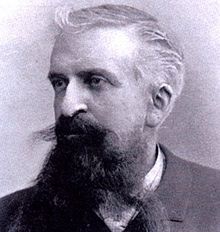 There is very little room for doubt that Le Bon’s theory was directed as using politics as an art form, in which an active leader sought to evoke pathos reactions in a passive crowd, and we can see it enacted in Italian history by Mussolini, who was profoundly influenced by the works of Le Bon. Not only did Mussolini use the works of Le Bon to draw pathos reactions from the people of Italy, he saw politics as an art form, which links it strongly to the need to provoke emotional states in the otherwise passive observers, with the ‘performance’ serving as the medium by which to connect the ‘artist’ (in this example, Mussolini) with the observer (the Italian public). Mussolini describes politics as an art below:
There is very little room for doubt that Le Bon’s theory was directed as using politics as an art form, in which an active leader sought to evoke pathos reactions in a passive crowd, and we can see it enacted in Italian history by Mussolini, who was profoundly influenced by the works of Le Bon. Not only did Mussolini use the works of Le Bon to draw pathos reactions from the people of Italy, he saw politics as an art form, which links it strongly to the need to provoke emotional states in the otherwise passive observers, with the ‘performance’ serving as the medium by which to connect the ‘artist’ (in this example, Mussolini) with the observer (the Italian public). Mussolini describes politics as an art below:
That politics is an art there is no doubt. Certainly it is not a science, nor is it empiricism. It is thus art. Also because in politics there is a lot of intuition. “Political” like artistic creation is a slow elaboration and a sudden divination. At a certain moment the artist creates with inspiration, the politician with decision. Both work the material and the spirit…In order to give wise laws to a people it is also necessary to be something of an artist.[14]
As an art, politics is governed by the same rule as other arts; that it operates by generating an appeal to the irrational, emotive states. By means of generating pathos, the speaker or leader creates a bond betwixt themselves and the crowd. This was by no means limited to Mussolini and is a widely utilised political technique. A political scientist, Walter Connor, analysed the speeches of great leaders of nations, as well as national revivalists and noted a conspicuous uniformity of phraseology that was observable in a number of these speeches.
Phrases and pictures of family, blood, brothers, sisters, mothers, ancestors, home were almost universal. The speeches and phrases were able to mobilize masses and many individuals also believed them in private. W. Connor justifies the force of these appeals to primordial attachments by their emotional strength through which they have affected and continue to affect the human mind.[15]
Connor’s analysis paints a very clear picture of the political uses of not only primordial attachments, but also the effects of the successful raising of pathos in the respective audiences. Furthermore, the fact that these elements were also present in Mao’s speeches suggests that the use of emotive language was not limited to the Right Wing – indeed, as a universal element in the culture spheres, the use of pathos in politics is independent of all political parties and regimes for it is a technique or component and thus could be utilised by any and all political persuasions. A quick examination of speeches from the former American president George W. Bush reveals a highly targeted usage of key words and phrases such as ‘freedom’ and the ‘axis of evil’. Though Bush’s use of pathos in politics pales in comparison to others, attempts to raise pathos in his politic speeches are present, and this is demonstrated by excessive repetition of phrases and carefully selected words which were targeted to rouse the American public. Thus, appeals to the emotions in politics are not limited to the far right or nationalism; the power of words and pathos is merely a tool which could be utilised by any political current.
Pathos, when coupled with the primordial attachments, is a driving force in the construction of national identities both in the world of theory and the application of real politic. In a smaller community, these primordial attachments tend to be stronger, but theorists are still at a loss to explain how they translate into nationalism, where the attachments are weaker. I would tend to argue that this in itself is no great mystery; there is merely a need to generate more pathos to enhance the existing feelings of communitas to a point where primordial attachments manifest at a level wherein they are made to appear even in inorganic constructs such as the ‘nation’. Baèová cites this point, saying that ‘According to some authors, the success of nationalism can today be explained by the fact that it made an efficient use of the strength of human primordial attachments and extended them to a macrocommunity, i.e. to the nation state.’[16]In the context of social theory, these attachments can be rendered in a variety of different forms.
Social categorization theory and research have taught us that there is personality-based identity (‘personal’ identity), and categorical/inscriptive or ‘group’ identity. Likewise, there are two kinds of attraction (Hogg 1992) : personal attraction (caused by the personality of another), and social attraction (caused by the group-membership of another, through the prototyped stereotype attached to such membership). However, this theory takes the (contextless) process of categorization itself to be decisive (Turner et al. 1987) , and proposes no theory about the different kinds of ‘groups’ with which people can identify. There are many kinds of group identities: ethnic, kinship, political, religious, gender, class, racial, regional. Each creates an in-group (where ego is member) and an out-group, and therefore a social boundary, by stipulating certain conditions that members must satisfy in order to be such. But psychologists have in general treated all group identities and in-group/out-group cleavages as resulting from the same, general, stereotype-formation process (for example, Bar-Tal et al. 1989; Leyens/Yzerbyt/Schadron 1994). However, we are probably equipped with specialized psychologies (plural) to process the different kinds of social boundaries that recur in the social world. Group identities are probably ‘domain-specific’, like most other aspects of human cognition (Symons, 1992; Tooby & Cosmides 1992). If so, membership conditions in one domain (political groups) may well be different from those in another (ethnic groups).[17]
The interesting implication which arises here, is that in such a community where pathos is strong enough to forge primordial attachments and enhance the feeling of communitas, is that it would create a friendlier, more caring community – this would stand in a marked contrast to the isolation of a community of ‘individuals’, which is today the hallmark of the majority of nations today. In discussing primordialism and pathos in nationalism, Heam argues that ‘to understand better the importance of human sentiments in the formation of nationalism, what is needed is detailed case and comparative studies that look at the actual interface of primordial discourses of kinship, territory and language, and primary groups in specific social structures, and the workings of national discourses in those contexts, whether playing upon primordialist themes or not’.[18]
Steve Bruce argues that religion is greatly underestimated as a force in contemporary Western society both in terms of literal belief and in terms of symbolic and metaphorical meaning.[19] Furthermore, as structural-functionalism has declined in the social sciences as a theoretical tool of analysis, so too have the functional aspects and relevance of religion been overlooked.[20] Certainly, due to the current climate religion is more misunderstood in the Occident than it was two hundred years ago – with every step taken towards scientific progress, research in the humanities has taken about twenty steps backward. We must not ignore the impact of different spiritual Traditions on national identity either, whether they have had positive or adverse effects, for spirituality, has, and continues to be, a driving force in human culture. As Durkheim concluded, ‘If religion has given birth to all that is essential in society, it is because the idea of society is the soul of religion’.[21] Thus in the eyes of Durkheim, society and religion are linked in a fundamental manner. Indeed, a cursory glance at the etymological origins of both religion and society reveals just how deep the connection betwixt the two is. The word ‘religion’ comes from the Latin religio, meaning bonds of social relations; ‘society’ comes from the Latin socio, meaning bonds of compassion and community.[22]The true role of spirituality is thus one of social relationships, which serve to define a network or community; a definition which would exclude all forms of political religion which define an individual’s role in relationship to the state instead.
Religion thus implies the idea of networks and relations superior to the individual that perform life-enhancing, even life-creating functions that create a sense of community and compassion because its members share relationships, thus was Durkheim able to identify God and religion as society. The relationships one enters into also help form one’s consciousness and culture and thus one’s identity, sense of place and belonging. Relationships convey knowledge and information, ways of interpreting the world and understanding one’s place in it – skills vital to maintaining one’s life in terms of social interaction, economic cooperation, material survival and physical (military) preservation.[23]
Therefore, if used correctly, spirituality should serve to bring a community together – only when spirituality falls into the hands of politics does it become misused for other agendas. Here, on a side note, I would also advocate, in light of the fact that spirituality has replaced religion as the common term for metaphysical beliefs, that both be substituted by the word Tradition when we speak of belief systems that are rooted in cultural and/or ancestral heritage. Having seen how Tradition can be warped by political agendas, it behoves us to explain what the appropriate role of Tradition should be in national identities. Otto says that “if there be any single domain of human experience that presents us with something unmistakably specific and unique peculiar to itself assuredly that is it is that of the religious life.” The individual nature of Tradition ties an individual to culture and community more strongly than ties of ethnicity and in terms of asserting or prescribing national identities it is more effective, particularly in the modern era where cultural groups are composed of mixed ethnicities. Moreover, the acceptance of the same Tradition equates to a similar cultural and ethical viewpoint which creates a more harmonious society, whereas geographical or ethnic primordial attachments create weaker bonds and the principle of communitas is lessened. Thus, I would argue that the principle primordial attachment in the theory of primordialism, is not ethnicity but Tradition. It has previously been asserted by Brass that ethnicity is the prime condition for primordialism, as it cited here.
According to P.R. Brass, it is common to all primordial views that ethnicity is based on descent. The primordial understanding of one’s ethnic membership explains the non-rational behaviour of people, which is against their other (even existential) interests when defending their ethnicity, their willingness to suffer persecution or to die for their nation.[24]
Whilst this may explain the rise of nations in the pre-colonial world, this view is longer feasible for primordialism as it is not sufficient to explain the mixed cultural groupings of the modern era. Not only are there now large communities of mixed ethnicity, there are also the newly emerging micro-communities to consider, which although currently limited to social networking, do exhibit the same patterns as newly emerging nations, in the regard that the social bonds are naturally arising from primordial attachments, usually cultural or lifestyle based. In the current era, any political theory or ideology which holds ethnicity to be the main primordial attachment is ultimately doomed to failure. The previous definition of primordialism is no longer appropriate as it does not allow variance in geography and ties ethnic groups to territorial locations. Thus, the theory needs to be revised to accurately reflect national identity in the modern era. In its current format it also fails to explain newly emergent forms of supra-nationalism such as the EU which will be addressed later in this article. A more feasible stance is advocated by Ernest Gellner.
According to him, nationalism means a transfer of the focus of People’s identity into a culture that is disseminated through literacy and the formal system of education. It is not the mother tongue (i.e. primordial attachment) that is important any more, but the language of alma mater (as an instrumental means of communication). This is a consequence, in Gellner’s opinion, of industrialization and the demands for a standardized system of education, which brought the community (polity) and culture closer together. In these psychological terms nationalism extended the cultural and civilization repertoire of the sources of an individual’s identity. However, nationalism assumes and relies on the efficiency of primordial sentiments.[25]
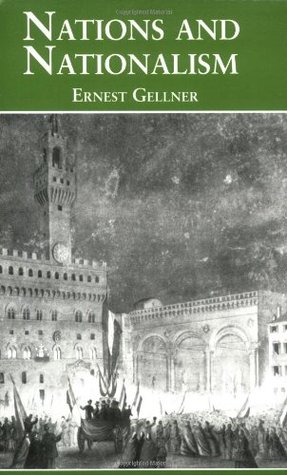 Thus the culmination of national identity, fostered by the primordial attachments, passes through the contemporary education system, and it is this way that all current modes of national identity are disseminated. Language is also reinforced as a prime focus for creating primordial bonds, and is perhaps the most important element in constructing national identity, for without a common linguistic group, there can be no opportunities for bonding within the community. Translated into education via the medium of language, the culture and community prescribe the value of the nation to an individual.[26]
Thus the culmination of national identity, fostered by the primordial attachments, passes through the contemporary education system, and it is this way that all current modes of national identity are disseminated. Language is also reinforced as a prime focus for creating primordial bonds, and is perhaps the most important element in constructing national identity, for without a common linguistic group, there can be no opportunities for bonding within the community. Translated into education via the medium of language, the culture and community prescribe the value of the nation to an individual.[26]
To integrate into a modern society (nation) everyone needs to share a single underlying culture. To integrate into a pre-modern society (ethnic group) one needs to acquire its very specific culture. The difference is that a modern culture has a universality to it that encourages differences, but only if they can effectively exchange and form relations of reciprocity, which requires uniformity and a single truth or system for defining truth. A pre-modern culture requires quite overt conformity to local conditions and so is non-universal, it is in fact very conformist, although the wide variety of different local styles of conformity seems to indicate a greater variety and non-conformity.[27]
So, then in the context of modernity, and accepting the given that this can no longer be based on ethnic descent, how can cultural and national identity be constructed in the modern era? With Brenner we see a new definition emerging providing arguments on both a supra and sub-national basis. Thus the traditional model of the nation-state can be unified at the macro-level and divided at the micro level, making the model not only top-heavy but providing weak foundations on which to build any bonds of communitas. However, the inverse model can also be constructed, with smaller micro-communities at the bottom, which serve to de-stabilise the top strata of the supra-national level by threatening to split the structure from the base, if we think of the macro/micro community to be pyramid shaped in structure. Thus, by disrupting the bottom of the pyramid it is possible to topple the larger macro-nation community structures by dividing communities at the micro level. Whilst the topic has been analysed numerous times, and the process itself has been widely acknowledged, little has been said of how this affects the nation, national identity, and how to rectify the situation, as Antonisch cites below:
All the above-mentioned studies affirm, more or less explicitly, that in the present epoch the nation-state, if not in crisis, is at least experiencing a transformation. Many of these studies, however, limit the analysis of this transformation to only one of the two dimensions of the ‘nation-state’. The focus is almost exclusively on the transformation of the structure and powers of the state. How this transformation affects the nation is somewhat passed under silence.[28]
In regards to supra-national constructs, many have predicted a decline in national identity, which would have an obvious and expected conclusion, given that merging small cultural systems into a larger one should consume the smaller, or least cause it diminish in size and strength. Curiously however, evidence actually points in the opposite direction. National pride has actually increased within the EU, with the exception of Northern Ireland. Whilst other factors could easily have been the cause of this, as opposed to it merely being the result of policy implementation at the supra-national level, the fact remains that it has increased. Whilst supra-nationalism obviously delivers nationalist identity in a few form which has not been utilised before, it is still a nationalist construct – one which remains unscathed by the negative imagery affiliated with nationalism in the post WWII era. Thus, unrecognisable to most as a supra-nationalist construct, it does not trigger the usual ‘knee-jerk’ reaction the public experiences in the presence of nationalist rhetoric. This means the impact of supra-nationalism, contrary to being an impediment to the cultural identity of member states, is actually creating nationalist sentiments, which even if they are not enough to provide a true sense of communitas betwixt inhabitants, is nonetheless generating nationalism, albeit from a macro level. The results of the surveys conducted by Eurobarometer are listed below.
Eurobarometer – The survey question about national pride (‘Would you say that you are very proud, quite proud, not very proud, or not at all proud to be [nationality]?’) was first asked in 1982, but unfortunately it was not included every year in Eurobarometer standard surveys, with a significant gap between 1989 and 1993. Looking at data at the European level, we notice that overall from 1982 to 2005, national identities among the EU-15 countries have not declined. On the contrary, at the European level, national identity has increased by ten percentage points. The countries which mainly account for this increase are Belgium, East Germany, and Italy. Northern Ireland is the only territory which has experienced a major downturn.[29]
This may in fact be an example of Manuel Castells study on identities in the age of the network society. According to Castells, religious fundamentalisms, ethno-nationalisms, regionalist movements, and local communes are today the new identity expressions of the ‘space of places’ which complement the de-territorialised, globalized identity of a technocratic-financial-managerial elite who lives in the ‘space of flows’.[30] Thus, it would be nationalism, but of the kind which is not confined to the ‘space of places’ but rather an example of the new modernist identities created by the ‘space of flows’. In regards to modernist constructs, we are dealing with a new form of nationalism which is not tied to any given community, nor is based on the organic model of Tradition.
In conclusion, the current modern shift towards a social structure based on modernism/instrumentalism, whilst obviously intended to construct cultural and/or national identity in the modern area, is likely to prove a top-heavy and unwieldy model which fails to provide a fundamental solid building base for the creation of communitas. The bonds it seeks to establish between citizens are insubstantial compared to the genuine ties generated by communitas and primordial attachments, both of which rely on the generation of pathos in order to create these bonds. Pathos can be raised through the arts, spirituality, or even charisma itself – the crucial element for success is not the mode, but the reaction itself, which serves to act as a catalyst for forging the primordial attachments that are required to cultivate a healthy society. The failure to generate this essential component makes modernism/instrumentalism incapable of rendering the appropriate amount of pathos required to create an emotional attachment or primordial bond to the inorganic nation/state impossible, which as a consequence also renders the failure of any movement based on national identity. With the inadequacy of modernism/instrumentalism and its failure to deliver any meaningful cultural significance, we are left with its opposite pole in the dyad, primordialism. As an old theory however, primordialism also is lacking in the modern era, due to the impetus it used to place on ethnicity as the defining point of identity – a solution which is at best tenuous in modern society. It is therefore imperative to revise the definition of primordialism so that it no longer bases its philosophy on the ethnicity of actors within the nation. The defining point of cultural identity needs to less rigid than that of fixed biology, and based on common viewpoints – for example a community whom shares the same philosophy is likely to be much more harmonious than one whose identity is based purely on physical characteristics. I therefore propose that the term primordialism be redefined to place greater emphasis of Tradition, spirit and culture – all the integral building blocks of society which render organic and naturally arising communities possible. It is only by creating a new cultural paradigm that is relevant to the modern era that any true spiritual or political reformation can begin.
[1] Bairner, A., National Sports and National Landscapes: In defence of Primordialism, in National Identities, Vol. 11, No. 3, (UK: Loughborough University, 2009), 223.
[2] Ibid., 224.
[3]Huysseune, M., Landscapes as a Symbol of Nationhood: the Alps in the Rhetoric of the Lega Nord in Nations and Nationalism, Issue 16 Vol.2, 2010, 355.
[4] Bairner, A., National Sports and National Landscapes: In Defence of Primordialism, in National Identities, 225.
[5] Baèová, V., The Construction of National Identity – on Primordialism and Instrumentalism, in Human Affairs, Issue 8 (Institute of Social Sciences, Slovak Academy of Sciences, 1998), 4.
[6] Ibid., 31.
[7] Ibid., 32.
[8] Ibid., 36.
[9] Ibid., 36.
[10]Antonsicha, M., National Identities in the Age of Globalisation: The Case of Western Europe, in National Identities, Vol. 11, No. 3 (UK: University of Birmingham, 2009), 28.
[11] Falasca-Zamponi, S., Fascist Spectacle: The Aesthetics of Power in Mussolini’s Italy (USA: University of California Press, 1997), 18.
[12]Ibid., 20.
[13] Ibid., 20.
[14] Ibid., 15.
[15]Baèová, V., The Construction of National Identity – on Primordialism and Instrumentalism, in Human Affairs, 41.
[16] Ibid., 38.
[17] Gill-White, F. J., How Thick is Blood? The Plot Thickens…if Ethnic Actors are Primordialists, what Remains of the Circumstantialist/Primordialist Controversy in Ethnic and Racial Studies, Volume 22 Number 5 (USA: Taylor & Francis Ltd, 1999), 800.
[18] Bairner, A., National Sports and National Landscapes: In Defence of Primordialism, in National Identities, 225.
[19] Dingleya, J., Religion, Truth, National Identity and Social Meaning: The Example of Northern Ireland, in National Identities Vol. 11, No. 4, December 2009, 367.
[20] Ibid. 368.
[21] Gates, D.K. & Steane, P., Political Religion – the Influence of Ideological and Identity Orientation in Totalitarian Movements and Political Religions, Vol. 10, Nos. 3–4, Taylor & Francis 2009, 305.
[22] James Dingleya, Religion, Truth, National Identity and Social Meaning: The Example of Northern Ireland, in National Identities, 369.
[23] Ibid., 369.
[24] Baèová, V., The Construction of National Identity – on Primordialism and Instrumentalism, in Human Affairs, 38.
[25] Ibid., 38-39.
[26] Ibid., 39.
[27]Dingleya, J., Religion, Truth, National Identity and Social Meaning: The Example of Northern Ireland, in National Identities, 380.
[28]Antonsicha, M., National Identities in the Age of Globalisation: The Case of Western Europe in National Identities, Vol. 11, No. 3, UK, 2009, 282.
[29] Ibid., 285.
[30] Ibid., 283.
22:41 Publié dans Théorie politique, Traditions | Lien permanent | Commentaires (0) | Tags : théorie politique, politologie, traditoon, sciences politiques, philosophie politique, nationalisme, nation, identité, identité nationale |  |
|  del.icio.us |
del.icio.us |  |
|  Digg |
Digg | ![]() Facebook
Facebook
The bizarre world of Christian Zionism
|
22:13 Publié dans Actualité | Lien permanent | Commentaires (1) | Tags : actualité, sionisme chrétien, christian zionism, sionisme, états-unis, théologie politique, israël, levant, proche orient, jérusalem |  |
|  del.icio.us |
del.icio.us |  |
|  Digg |
Digg | ![]() Facebook
Facebook


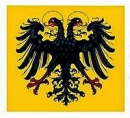


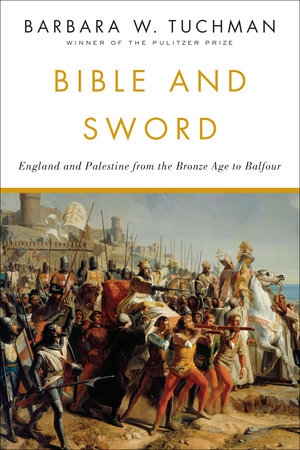 As Jewish scholar Barbara Tuchman documented in her famous account of British Zionism, Bible and Sword, the roots of Christian Zionism went back to the British Imperial ideology, in which certain very prominent British establishment figures including Lord Palmerston, Lord Balfour and Shaftesbury saw support for a Jewish home in Palestine as part of a manufactured or synthetic ideology in which they claimed the British people to be the ‘Chosen People’, the ‘Lost Tribe of Israel.’
As Jewish scholar Barbara Tuchman documented in her famous account of British Zionism, Bible and Sword, the roots of Christian Zionism went back to the British Imperial ideology, in which certain very prominent British establishment figures including Lord Palmerston, Lord Balfour and Shaftesbury saw support for a Jewish home in Palestine as part of a manufactured or synthetic ideology in which they claimed the British people to be the ‘Chosen People’, the ‘Lost Tribe of Israel.’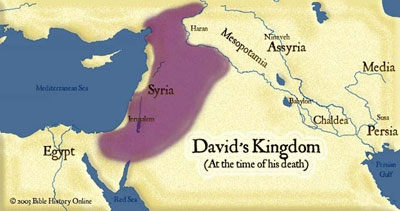
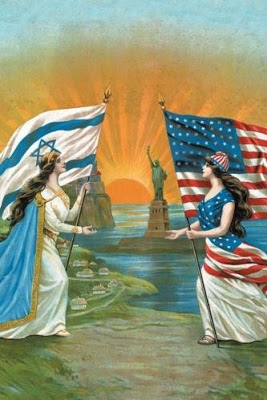 Graham, who controlled an organization known as the Samaritan Purse, was a close religious adviser to George W. Bush. In 2003 Graham got permission from the US occupation authorities to bring his Evangelical anti-Islam form of Christianity into Iraq to win “converts” to his fanatical brand of Christianity.
Graham, who controlled an organization known as the Samaritan Purse, was a close religious adviser to George W. Bush. In 2003 Graham got permission from the US occupation authorities to bring his Evangelical anti-Islam form of Christianity into Iraq to win “converts” to his fanatical brand of Christianity. 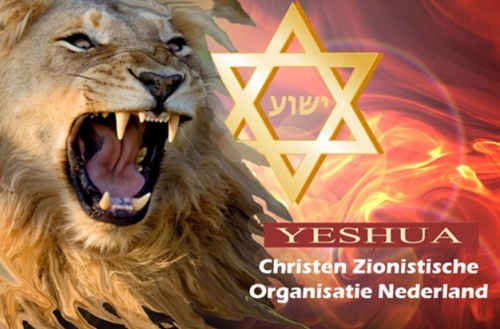
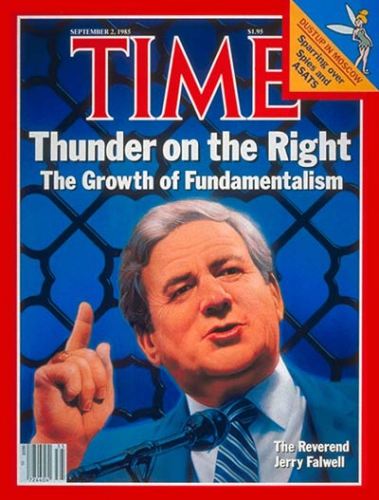 In 1979, Reverend Jerry Falwell, a member of the Committee on National Policy and a Christian Zionist leading figure, launched an organisation known as the Moral Majority with the aim ‘to mobilize the Christian church on behalf of moral and social issues and to encourage participation by people of faith in the political process.’
In 1979, Reverend Jerry Falwell, a member of the Committee on National Policy and a Christian Zionist leading figure, launched an organisation known as the Moral Majority with the aim ‘to mobilize the Christian church on behalf of moral and social issues and to encourage participation by people of faith in the political process.’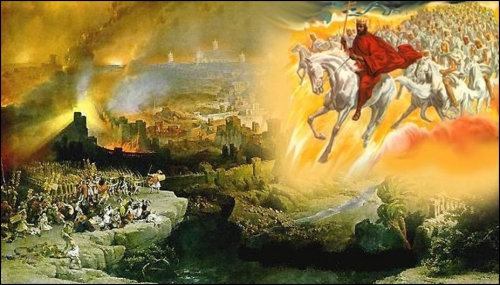
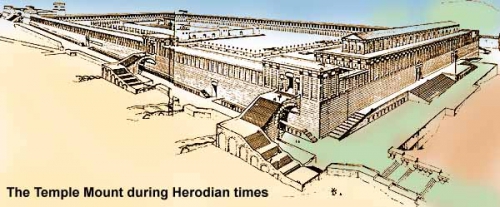

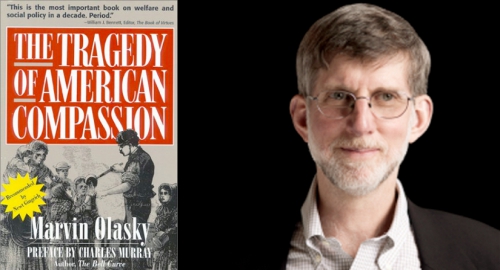
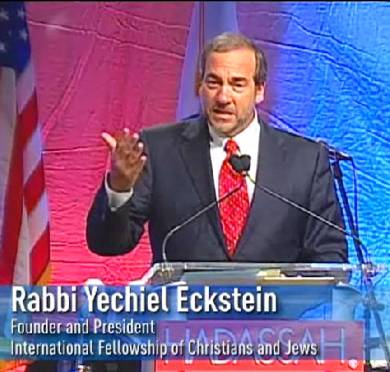 Rabbi Eckstein had built his International Fellowship for Christians and Jews into a philanthropic powerhouse that donated tens of millions of dollars to Israel annually. He forged close relationships with popular right-wing evangelical leaders such as Pat Robertson and Gary Bauer, as well as White House neoconservatives like Elliott Abrams, who was in charge of Middle East policy on the National Security Council of Condi Rice. Eckstein and his allies played an instrumental role in pressuring the Bush administration to abandon the so-called Road Map to peace and defend Sharon's and later Olmert’s brutal handling of the occupation.
Rabbi Eckstein had built his International Fellowship for Christians and Jews into a philanthropic powerhouse that donated tens of millions of dollars to Israel annually. He forged close relationships with popular right-wing evangelical leaders such as Pat Robertson and Gary Bauer, as well as White House neoconservatives like Elliott Abrams, who was in charge of Middle East policy on the National Security Council of Condi Rice. Eckstein and his allies played an instrumental role in pressuring the Bush administration to abandon the so-called Road Map to peace and defend Sharon's and later Olmert’s brutal handling of the occupation.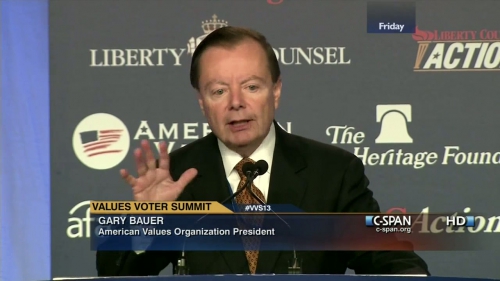
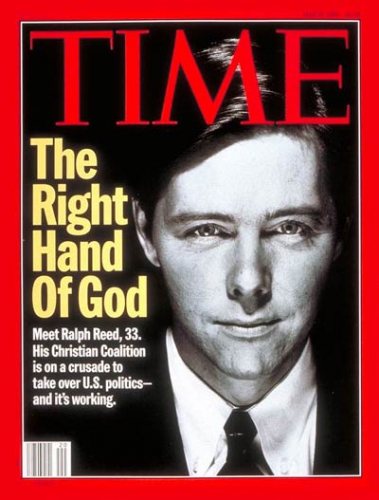 Another secretive organization with significant hidden influence with the Bush White House was the Apostolic Congress.
Another secretive organization with significant hidden influence with the Bush White House was the Apostolic Congress.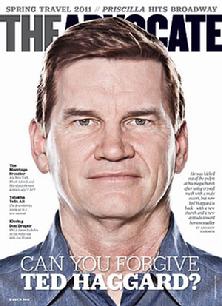 One of the most influential right-wing American Evangelicals linked intimately to the Bush White House, until a scandal forced his retirement just before the November 2006 US Congressional elections was Pastor Ted Haggard, founder of the 11,000 member New Life Church near Colorado Springs, Colorado, home of the US Air Force Academy.
One of the most influential right-wing American Evangelicals linked intimately to the Bush White House, until a scandal forced his retirement just before the November 2006 US Congressional elections was Pastor Ted Haggard, founder of the 11,000 member New Life Church near Colorado Springs, Colorado, home of the US Air Force Academy.